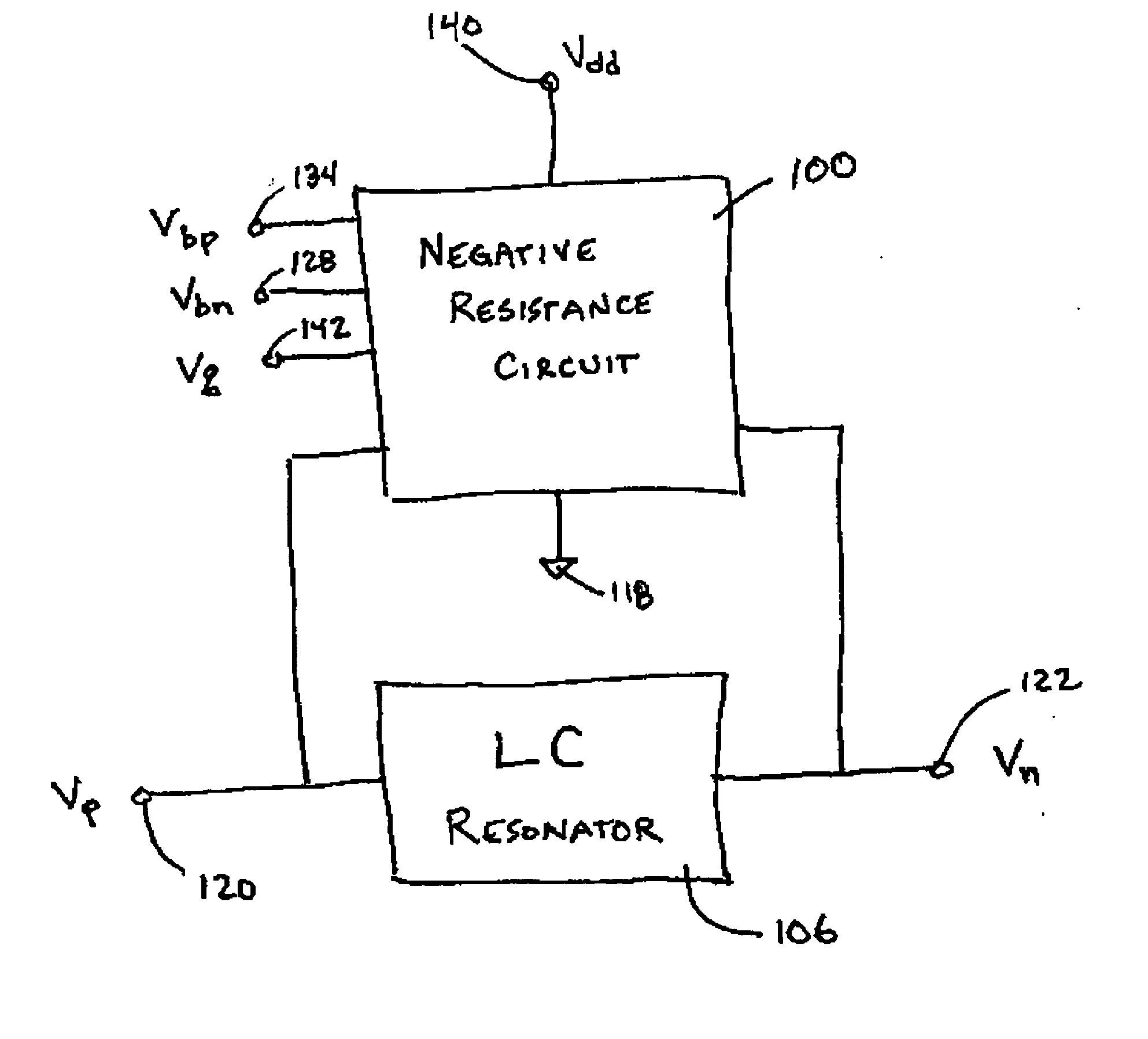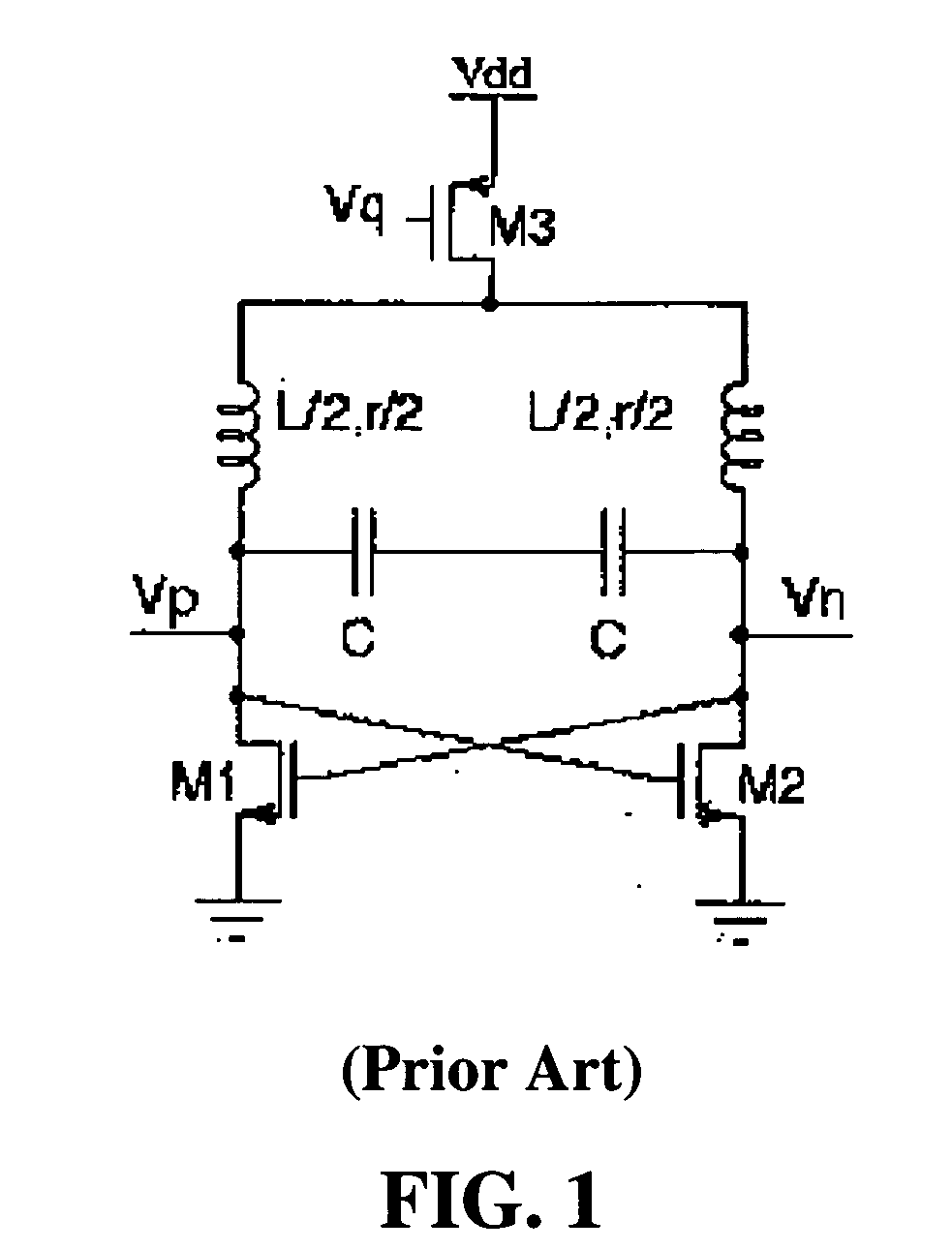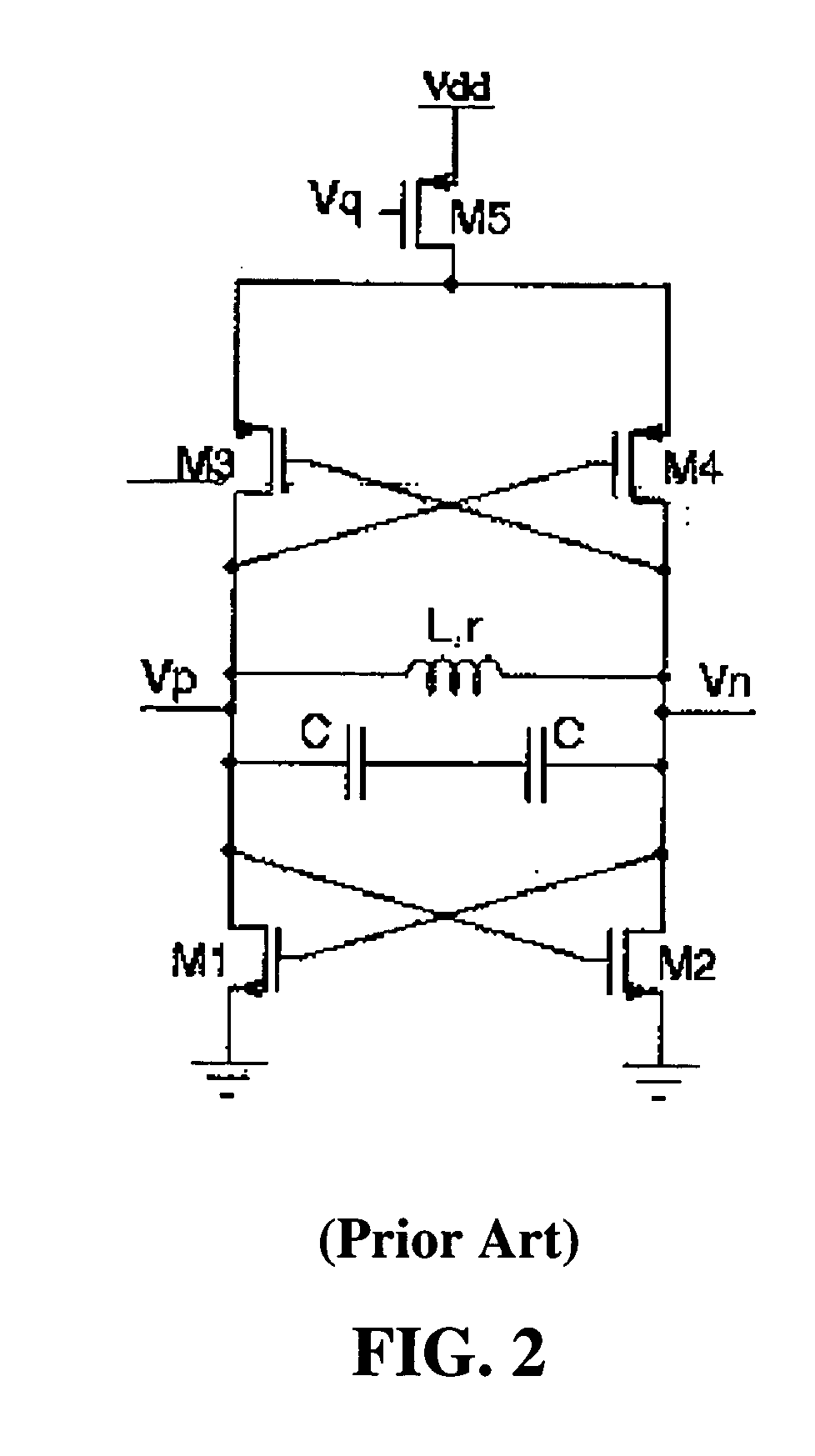CMOS negative resistance/Q enhancement method and apparatus
a negative resistance and enhancement technology, applied in the field of negative resistance circuits, to achieve the effect of optimizing the quality factor q
- Summary
- Abstract
- Description
- Claims
- Application Information
AI Technical Summary
Benefits of technology
Problems solved by technology
Method used
Image
Examples
Embodiment Construction
[0036] One embodiment of a CMOS negative resistance circuit 100 is shown in FIG. 4, coupled in parallel to an LC resonator 106. FIG. 5 shows an expanded view of the negative resistance circuit 100 and the LC resonator 106 of FIG. 4. The capacitor C 102 and the inductor L 104 form a parallel LC resonator 106. The inductor 104 is a lossy device; the lossy component is typically modeled as a resistance connected in series with the inductance. FIG. 5 shows the presence of that resistance via the “r” in the inductor symbol. The remaining components in FIG. 5 represent a negative resistance circuit applied to the resonator to cancel the loss. M1110 and M2112 are NMOS transistors; M3114 and M4116 are PMOS transistors. The drains of M1110 and M3114 are electrically coupled together (referred to herein as a “drain coupling” of these transistors), and the drains of M2112 and M4116 are electrically coupled together. The sources of M3114 and M4116 are electrically coupled together, and the sour...
PUM
 Login to View More
Login to View More Abstract
Description
Claims
Application Information
 Login to View More
Login to View More - R&D
- Intellectual Property
- Life Sciences
- Materials
- Tech Scout
- Unparalleled Data Quality
- Higher Quality Content
- 60% Fewer Hallucinations
Browse by: Latest US Patents, China's latest patents, Technical Efficacy Thesaurus, Application Domain, Technology Topic, Popular Technical Reports.
© 2025 PatSnap. All rights reserved.Legal|Privacy policy|Modern Slavery Act Transparency Statement|Sitemap|About US| Contact US: help@patsnap.com



